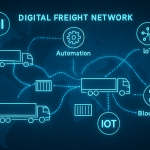Traditional workforce management has long been plagued by several challenges that hinder organizational efficiency and effectiveness. One of the primary challenges is manual, time-consuming processes involved in scheduling, tracking attendance and managing employee tasks. This leads to inefficiencies, errors and difficulties in optimizing workforce resources. Additionally, traditional processes offer limited visibility into real-time data, resulting in suboptimal resource allocation. Moreover, traditional workforce management practices may face difficulties in adapting to dynamic business needs, changing regulatory requirements and evolving workforce demographics, leading to issues in talent retention, skill mismatches and compliance concerns.
In the face of these persistent challenges, the emergence of AI, Automated Machine Learning (AutoML) and cloud technologies offers a glimmer of hope. By harnessing the power of data and automation, these cutting-edge tools revolutionize how organizations approach employee scheduling, task management and decision-making processes. With AI’s ability to automate routine tasks, AutoML’s capability to generate actionable insights from data and the scalability of cloud technologies, businesses can overcome inefficiencies and limitations of manual processes. This convergence of technology not only addresses the complexities of real-time data management and resource optimization but also paves the way for agile, data-driven workforce management solutions that adapt seamlessly to evolving business landscapes.
Power of AI-Driven Forecasting in Workforce Management
AI-driven forecasting models have revolutionized workforce management by offering advanced capabilities to predict both short-term and long-term needs with precision. These models leverage sophisticated algorithms and machine learning techniques to analyze historical data, trends and external factors, enabling organizations to make informed decisions about staffing levels, skills requirements and resource allocation.
Short-term forecasting involves predicting immediate workforce needs, such as daily or weekly staffing requirements based on current demand, seasonality, or specific events. AI-driven models can analyze real-time data, including unstructured information such as audio recordings, call transcripts, and emails, to forecast staffing needs accurately. By considering factors like absences, skill levels and task assignments, these models optimize workforce scheduling to meet business demands efficiently.
On the other hand, long-term forecasting focuses on predicting workforce needs over an extended period, such as months or years ahead. AI-driven models use historical data, industry trends, demographic shifts and business projections to forecast long-term staffing requirements. By identifying future skill gaps, talent shortages and emerging roles, these models help organizations develop strategic workforce plans, succession strategies and training programs to align with future business objectives.
Overall, AI-driven forecasting models provide organizations with a holistic view of their workforce needs, enabling proactive workforce management strategies .AI-Powered Intelligent Rostering: Prioritizing Employee Satisfaction and Work-Life Balance
AI technology revolutionizes the creation of intelligent rosters by incorporating employee preferences and work-life balance considerations into the scheduling process. Through sophisticated algorithms and machine learning capabilities, AI can analyze vast amounts of data, including employee preferences, availability, skills and workloads, to generate optimized schedules.
AI-powered scheduling systems can consider factors, such as preferred shift timings, days off, skillsets and even commute times to create rosters that align with each employee’s work preferences and promote a healthy work-life balance. They enable employees to bid for preferred shifts and weekly offs, enhancing their sense of ownership and flexibility in managing their work schedules. Moreover, AI technology allows team leaders to efficiently review and approve employee preferences, facilitate shift swaps and monitor team performance metrics in real-time. By considering these individual preferences [VS1] and constraints, AI-driven rosters can enhance employee satisfaction, reduce turnover rates and boost overall morale within the workforce.
Additionally, calculating staff requirements is a critical process that hinges on two key factors: competency and task duration. This step is essential to ensure that proficient individuals are allocated to suitable tasks, striking a perfect balance between skill levels and time management for optimal performance. Time tracking data plays a pivotal role in assessing staff productivity and efficiency. By analyzing the time taken by current staff members to complete tasks, organizations can identify inefficiencies and potential delays. If the data indicates that tasks are taking longer than expected, it may signal the need to recruit additional employees to streamline workflow and meet deadlines effectively.
In essence, AI-powered intelligent rosters represent a significant leap forward in workforce management, offering a personalized and balanced approach to scheduling that benefits employees and the organization.
Unlock Your Workforce’s Potential with AI
The integration of AI, AutoML and cloud technologies into workforce management is no longer a futuristic concept but a practical necessity for businesses striving for operational excellence. By harnessing the power of these tools, organizations can streamline staffing processes, optimize resource allocation and elevate employee satisfaction. However, it’s crucial to remember that technology is a means to an end, not a replacement for human ingenuity—it needs a holistic approach. Embarking on the journey of AI-powered workforce management can be transformative. By exploring and implementing advanced solutions, businesses can gain a competitive edge, drive growth and create a more fulfilling work environment for their employees. The future of work is here, and it’s powered by intelligent, data-driven strategies.
Lynn Martelli is an editor at Readability. She received her MFA in Creative Writing from Antioch University and has worked as an editor for over 10 years. Lynn has edited a wide variety of books, including fiction, non-fiction, memoirs, and more. In her free time, Lynn enjoys reading, writing, and spending time with her family and friends.















